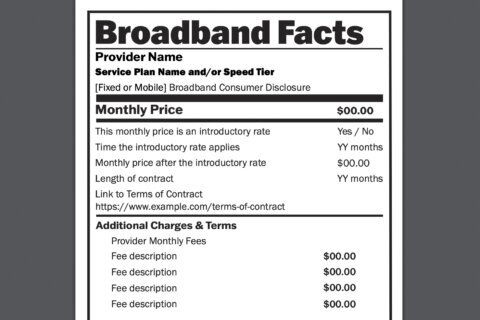The trove of IRS records recently uncovered by ProPublica has confirmed what many have always suspected: Billionaires often enjoy a substantially lower tax rate than the average American.
They do that by claiming losses and deductions that reduce their taxable income and by holding much of their wealth in investments, which often aren’t taxed on an annual basis.
The most recent example from ProPublica’s reporting: PayPal co-founder Peter Thiel, who in 1999 had the privilege of purchasing company stock for one-tenth of a penny per share. He bought 1.7 million shares for just $1,700, and he did so in a powerhouse retirement account known as a Roth IRA.
THE ROTH IRA ADVANTAGE
It’s not a coincidence that Thiel opted for a Roth IRA to hold his PayPal shares: Investments in a Roth IRA grow tax-free. In Thiel’s case, ProPublica says that investment has grown to about $5 billion.
Yes, that seems unfair. But typical Americans don’t have to be Peter Thiel to take advantage of the Roth’s tax benefits.
“The rules really aren’t different for Peter, or any wealthy person, and the average person that’s out there,” says Todd Scorzafava, a certified financial planner and partner at Eagle Rock Wealth Management in East Hanover, New Jersey.
So what are those rules? Among other things, you’ll have to wait until age 59 ½ to start pulling investment income out of your Roth IRA; otherwise, it may be taxed or penalized. The account also has income limits, and an annual contribution limit of $6,000 ($7,000 if you’re 50 or older). Those who follow the rules — tech billionaires or otherwise — reap the Roth’s rewards.
HOW ANYONE MIGHT BENEFIT FROM A ROTH IRA
With a traditional IRA, contributions are tax-deductible, meaning your taxable income will be lower the year you make contributions. Distributions in retirement, however, are taxed as ordinary income.
Roth IRAs are funded with money that’s already been taxed, so there’s no additional tax deduction on contributions. But qualified withdrawals in retirement are tax-free. This makes Roth IRAs an especially attractive option for savers with a long-time horizon, Scorzafava says.
“Yes, a tax deduction now sometimes sounds great, but is that tax deduction going to outweigh the benefit of a Roth later on?” Scorzafava says.
Consider it this way: In the early and middle stages of your career, you’ll likely be in a lower tax bracket. So it may make sense, Scorzafava says, to contribute to a Roth early on. Ideally, your investment will grow over time, and you can pull money out in retirement tax-free.
A PLACE FOR HIGH-GROWTH ASSETS
The PayPal shares in Thiel’s Roth IRA grew in a way most of us will never see in our own Roths. However, anyone with a long investment timeline — looking at you, 20- and 30-something investors — can still use their Roths as a holding pen for aggressive, high-growth investments.
“Where you’re placing your assets can make a profound difference,” Scorzafava says. “Where would you want to own a high-growth company? I’d want to own that first in my Roth IRA, because the expectation of return is supposed to be higher, and that’s going to grow up tax-free.”
A diversified portfolio typically includes a mix of stocks and bonds: Stocks are higher-risk assets that often drive bigger returns; bonds are lower-return buoys that can help keep volatility down. However, young investors with decades until retirement may want to stack their portfolio with mostly — if not entirely — stocks and stock mutual funds. A Roth IRA may be a perfect place to park them.
By opening and investing through a Roth IRA, you’re growing your wealth over time. Your account balance may not have as many zeros as Thiel’s, but the mechanism for accumulating your own level of wealth is the same. Then, come retirement, you can draw on that accumulated wealth, meaning at least part of your income would go untaxed — just like some of the world’s richest people.
TOO RICH FOR A ROTH?
There’s one major catch with Roth IRAs: the income limits. In 2021, you can’t contribute if you earn more than $140,000 as a single filer or $208,000 if you’re married filing jointly.
But Scorzafava says you can still take advantage of a Roth if your income exceeds that threshold. There are perfectly legal ways for high earners to reap the tax benefits of Roths; the most common is a backdoor Roth IRA, which requires converting a traditional IRA into a Roth account. It’s best to have a financial adviser walk you through this process, Scorzafava says.
Your wealth will most likely never match that of Peter Thiel, but there’s no reason you can’t take similar steps to reduce taxes on the money you do accumulate.
___
This article originally appeared on the personal finance website NerdWallet. This content is for educational and informational purposes and does not constitute investment advice. Chris Davis is a writer at NerdWallet. Email: cdavis@nerdwallet.com.
RELATED LINKS:
NerdWallet: What Is a Roth IRA? How Roth IRAs Work, Contribution Rules & Where to Start https://bit.ly/nerdwallet-roth-ira
ProPublica: Lord of the Roths: How Tech Mogul Peter Thiel Turned a Retirement Account for the Middle Class Into a $5 Billion Tax-Free Piggy Bank https://www.propublica.org/article/lord-of-the-roths-how-tech-mogul-peter-thiel-turned-a-retirement-account-for-the-middle-class-into-a-5-billion-dollar-tax-free-piggy-bank
Copyright © 2024 The Associated Press. All rights reserved. This material may not be published, broadcast, written or redistributed.







